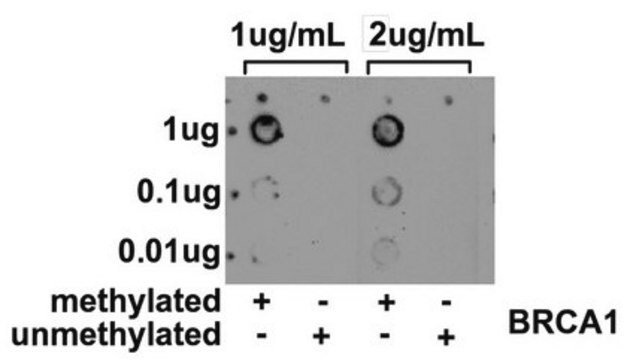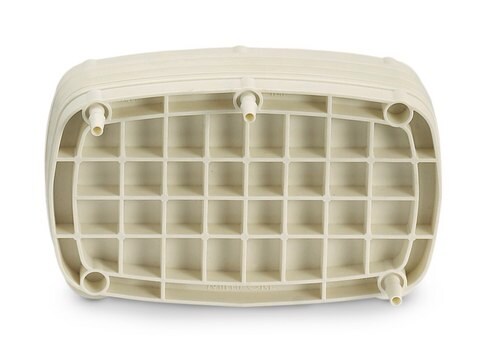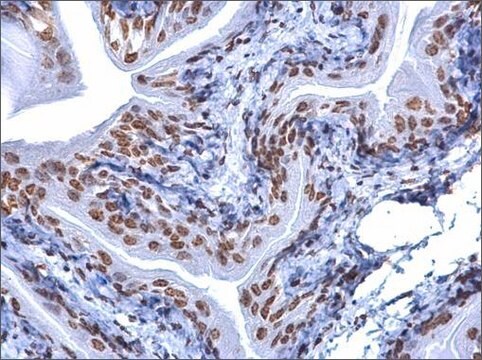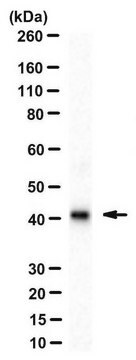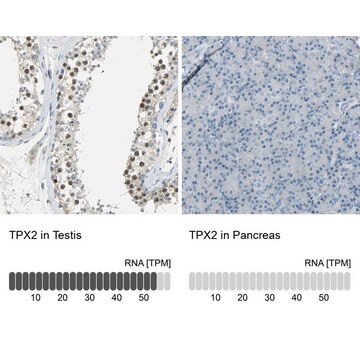NA81
Anti-5-Methylcytosine Mouse mAb (162 33 D3)
liquid, clone 162 33 D3, Calbiochem®
Synonym(s):
Anti-5-mc, Anti-5-MeCyd
Sign Into View Organizational & Contract Pricing
Select a Size
All Photos(1)
Select a Size
Change View
About This Item
UNSPSC Code:
12352203
NACRES:
NA.43
Recommended Products
biological source
mouse
Quality Level
antibody form
affinity isolated antibody
antibody product type
primary antibodies
clone
162 33 D3, monoclonal
form
liquid
does not contain
preservative
species reactivity (predicted by homology)
all
manufacturer/tradename
Calbiochem®
storage condition
OK to freeze
avoid repeated freeze/thaw cycles
General description
Immunoaffinity purified mouse monoclonal antibody. Recognizes 5-methylcytosine.
Recognizes 5-methylcytosine in methylated DNA or RNA in NIH3T3 cells.
Specific
• Affinity purified mouse monoclonal antibody - Detects methylated DNA from a broad range of species. Several Applications
• Flow Cytometry
• Frozen Sections
• Immunoblotting
• Immunofluorescence
• Paraffin Sections
Reliable
• Generates reproducible results.
• Clone 162 33 D3 has been used in over 50 publications.
Specific
• Affinity purified mouse monoclonal antibody - Detects methylated DNA from a broad range of species. Several Applications
• Flow Cytometry
• Frozen Sections
• Immunoblotting
• Immunofluorescence
• Paraffin Sections
Reliable
• Generates reproducible results.
• Clone 162 33 D3 has been used in over 50 publications.
This Anti-5-Methylcytosine Mouse mAb (162 33 D3) is validated for use in ELISA, FC, Frozen Sections, IF, Paraffin Sections, Radioimmunoassay, Southwestern Blot for the detection of 5-Methylcytosine.
Immunogen
5-methylcytosine conjugated to ovalbumin
Application
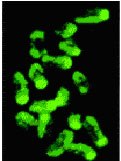
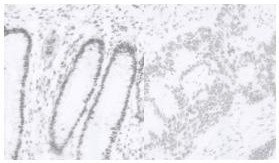
ELISA (0.1 g/ml)
Flow Cytometry (1 g/ml)
Frozen Sections (5-10 g/ml)
Immunoblotting (5 g/ml)
Immunofluorescence (1 g/ml)
Paraffin Sections (5-10 g/ml)
Radioimmunoassay (0.1 g/ml)
Southwestern Blot (5 g/ml)
Packaging
Please refer to vial label for lot-specific concentration.
Warning
Toxicity: Standard Handling (A)
Physical form
In PBS, pH 7.4.
Reconstitution
Following initial thaw, aliquot and freeze (-20°C).
Analysis Note
Positive Control
NIH3T3 cells
NIH3T3 cells
Other Notes
Clone 162 33 D3 is useful for the quantitative and qualitative detection of methylated DNA or RNA in a variety of samples and applications. It has been used in over 40 publications. Antibody should be titrated for optimal results in an individual systems.
Ehrlich, M. 2002. Oncogene21, 5400. (Review)
Widschwendter, M. and Jones, P.A. 2002. Oncogene21, 5462. (Review)
Barton, S.C., et al. 2001. Hum. Mol. Genet.10, 2983.
Piyathilake, C.J., et al. 2001. Hum. Pathol.32, 856.
Taddei, A., et al. 2001. Nat. Cell Biol.3, 114.
Piyathilake, C.J., et al. 2000. Biotech. Histochem.75, 251.
De Capoa, A., et al. 1999. FASEB J.13, 89.
Widschwendter, M. and Jones, P.A. 2002. Oncogene21, 5462. (Review)
Barton, S.C., et al. 2001. Hum. Mol. Genet.10, 2983.
Piyathilake, C.J., et al. 2001. Hum. Pathol.32, 856.
Taddei, A., et al. 2001. Nat. Cell Biol.3, 114.
Piyathilake, C.J., et al. 2000. Biotech. Histochem.75, 251.
De Capoa, A., et al. 1999. FASEB J.13, 89.
Legal Information
CALBIOCHEM is a registered trademark of Merck KGaA, Darmstadt, Germany
Not finding the right product?
Try our Product Selector Tool.
Storage Class Code
11 - Combustible Solids
WGK
WGK 1
Flash Point(F)
Not applicable
Flash Point(C)
Not applicable
Certificates of Analysis (COA)
Search for Certificates of Analysis (COA) by entering the products Lot/Batch Number. Lot and Batch Numbers can be found on a product’s label following the words ‘Lot’ or ‘Batch’.
Already Own This Product?
Find documentation for the products that you have recently purchased in the Document Library.
Takahiro Kawanabe et al.
Proceedings of the National Academy of Sciences of the United States of America, 113(43), E6704-E6711 (2016-10-30)
Hybrid vigor or heterosis refers to the superior performance of F1 hybrid plants over their parents. Heterosis is particularly important in the production systems of major crops. Recent studies have suggested that epigenetic regulation such as DNA methylation is involved
Bo Xia et al.
International journal of toxicology, 35(3), 336-343 (2016-03-11)
Benzo[a]pyrene (B[a]P) exposure has been associated with the alteration in epigenetic marks that are involved in cancer development. Biotinidase (BTD) and holocarboxylase synthetase (HCS) are 2 major enzymes involved in maintaining the homeostasis of biotinylation, and the deregulation of this
Jun-Xue Jin et al.
Cellular physiology and biochemistry : international journal of experimental cellular physiology, biochemistry, and pharmacology, 41(3), 1255-1266 (2017-03-08)
Hypoacetylation caused by aberrant epigenetic nuclear reprogramming results in low efficiency of mammalian somatic cell nuclear transfer (SCNT). Many epigenetic remodeling drugs have been used in attempts to improve in vitro development of porcine SCNT embryos. In this study, we
Wenqiang Cao et al.
Nature communications, 7, 11687-11687 (2016-05-24)
T-cell development in the thymus is largely controlled by an epigenetic program, involving in both DNA methylation and histone modifications. Previous studies have identified Cxxc1 as a regulator of both cytosine methylation and histone 3 lysine 4 trimethylation (H3K4me3). However
D G Kristensen et al.
British journal of cancer, 110(3), 668-678 (2013-12-03)
Developmental arrest of fetal germ cells may lead to neoplastic transformation and formation of germ cell tumours via carcinoma in situ (CIS) cells. Normal fetal germ cell development requires complete erasure and re-establishment of DNA methylation. In contrast to normal
Our team of scientists has experience in all areas of research including Life Science, Material Science, Chemical Synthesis, Chromatography, Analytical and many others.
Contact Technical Service